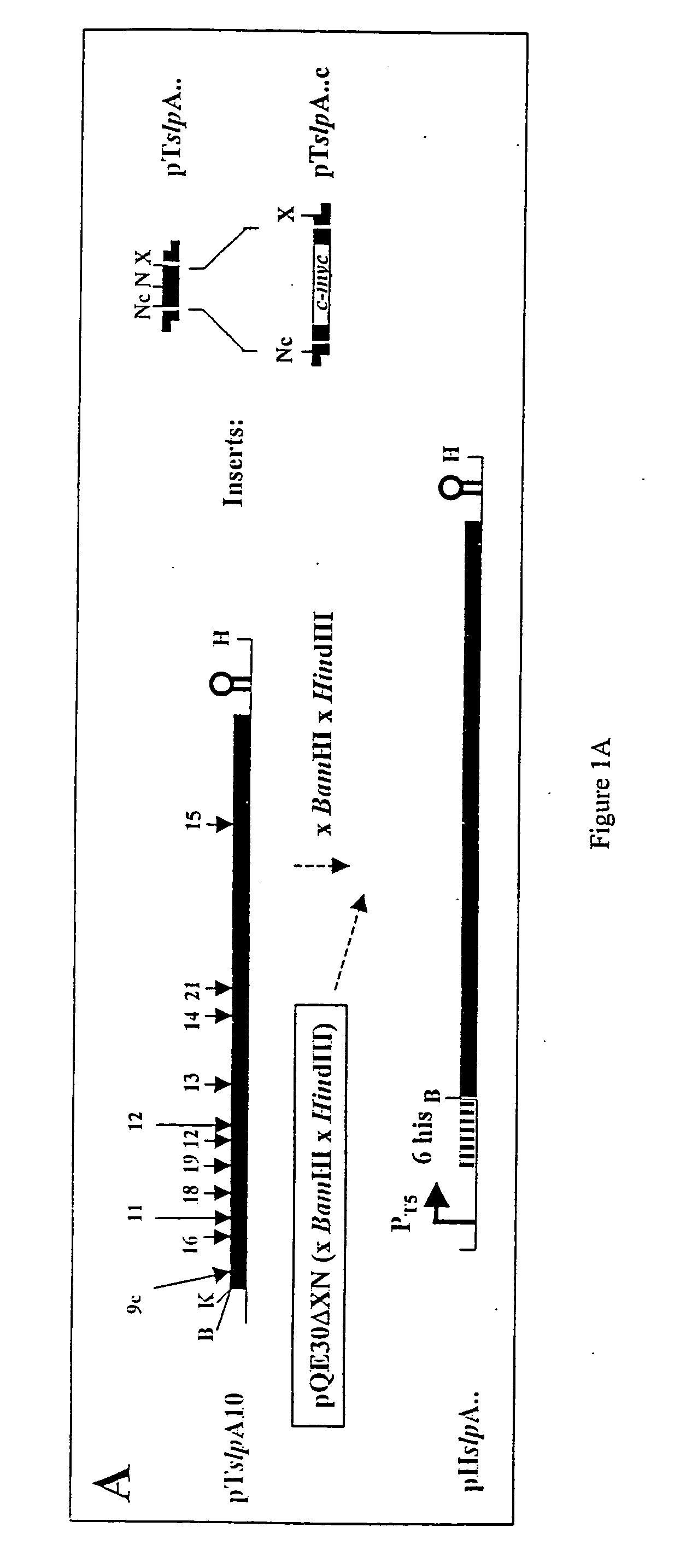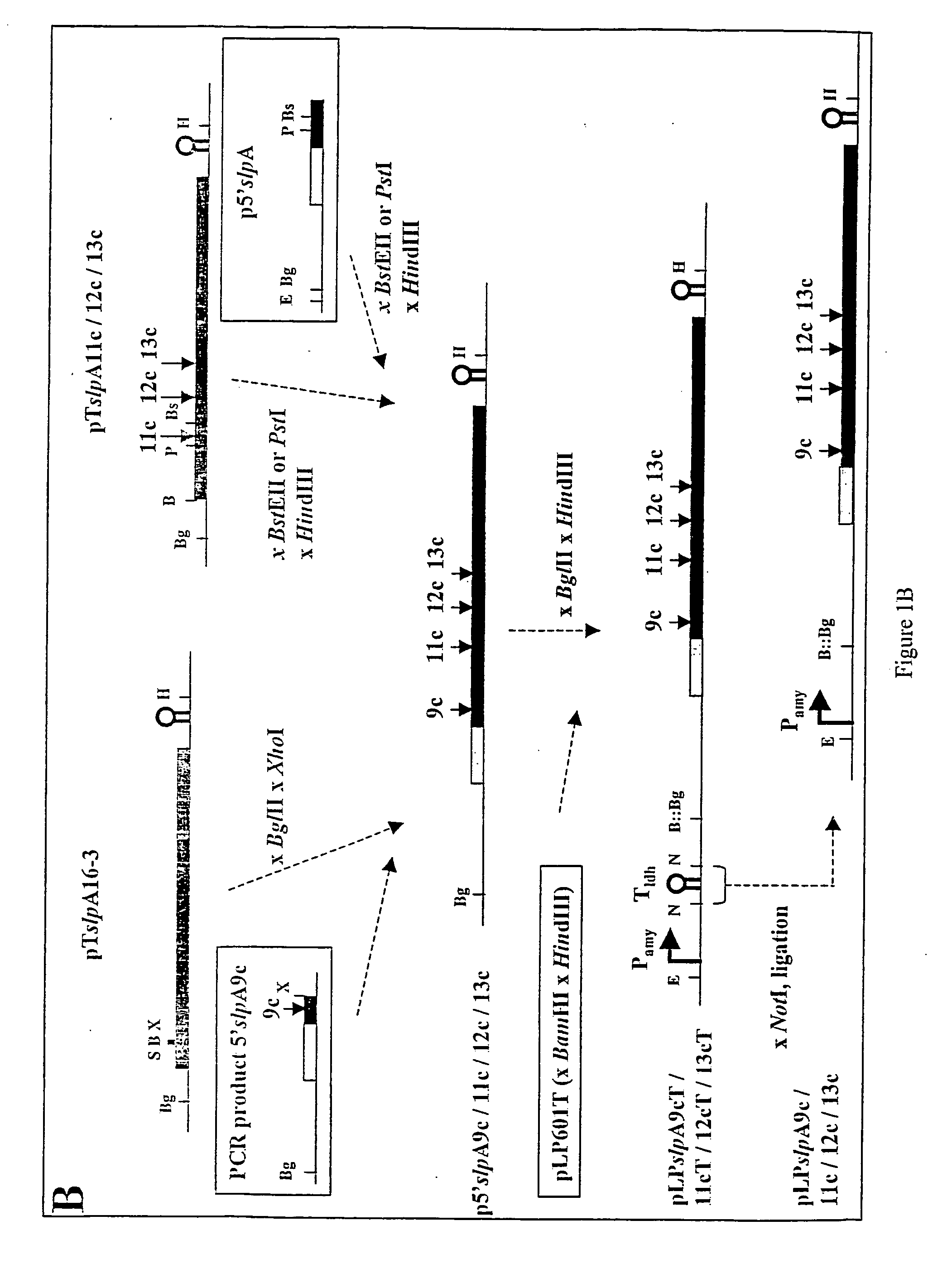Modified bacterial surface layer proteins
a technology of surface layer proteins and bacterial bacteria, which is applied in the direction of bacterial antigen ingredients, carrier-bound/immobilised peptides, botany apparatus and processes, etc., can solve the problems of inability to predict, poor characterisation of adhesion properties of s-layers, and inability to adapt to the environment, etc., and achieve the effect of being readily availabl
- Summary
- Abstract
- Description
- Claims
- Application Information
AI Technical Summary
Benefits of technology
Problems solved by technology
Method used
Image
Examples
Embodiment Construction
Summary
[0195] The structure of the crystallisation domain, SAN, of the SA-protein of L. acidophilus ATCC 4356 was analysed by insertion and deletion mutagenesis, and by proteolytic treatment. Mutant SA-protein synthesised in E. coli with 7-13 amino acid insertions near the N-terminus or within regions of sequence variation in SAN (amino acid position 7, 45, 114, 125, 193) could form crystalline sheets, whereas insertions in conserved regions or in regions with predicted secondary structure elements (positions 30, 66, 88 and 156) destroyed this capacity. An insertion in the cell wall binding domain (position 345) did not affect crystallisation. FACscan analysis of L. acidophilus synthesising three crystallising and one non-crystallising SA-protein c-myc (19 amino acids) insertion mutant was performed with c-myc antibodies. Fluorescence was most pronounced for insertions at positions 125 and 156, less for position 45 and severely reduced for position 7. Immunofluorescence microscopy...
PUM
| Property | Measurement | Unit |
|---|---|---|
| Atomic weight | aaaaa | aaaaa |
Abstract
Description
Claims
Application Information
 Login to View More
Login to View More - R&D
- Intellectual Property
- Life Sciences
- Materials
- Tech Scout
- Unparalleled Data Quality
- Higher Quality Content
- 60% Fewer Hallucinations
Browse by: Latest US Patents, China's latest patents, Technical Efficacy Thesaurus, Application Domain, Technology Topic, Popular Technical Reports.
© 2025 PatSnap. All rights reserved.Legal|Privacy policy|Modern Slavery Act Transparency Statement|Sitemap|About US| Contact US: help@patsnap.com



